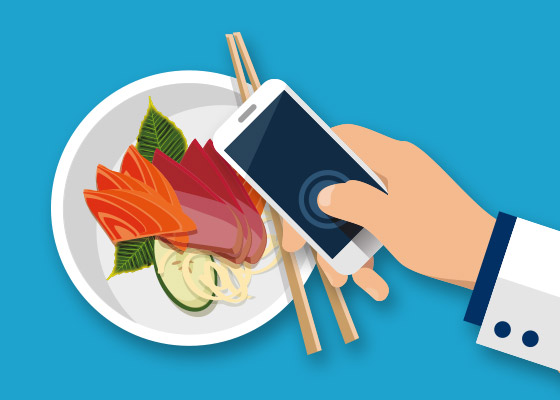Customers are becoming more specific in their demands of the food and drink industry, as shown by this year’s top ten industry trends.

Over the past few months, there have been plenty of opinion pieces and research studies about the next big food and drink trends. There’s a wide range of claims, but some common threads are discernible, creating a clear top ten throughout the industry.
1. Clearer, more informative labelling
Consumers are becoming more specific about what is in the food they buy. They are increasingly interested in the nutritional value of food such as salt content. Allied to consumer concerns about sugar and fat content, gluten, dairy and nut intolerances, legislation also calls for clearer food labelling. Packaging must give clear and accurate information about ingredients and their source.
2. Increasing demands for “authentic” cuisine
Many food and drink trends are driven by the Millennial Generation. One characteristic shared by many of these young adults is the extent to which they have travelled in comparison to their parents. This means they have experienced a far wider range of indigenous cuisine. Back home they want to enjoy similar food, so we can expect to see a growing demand for authentic regional food and ingredients from Asia, the Middle East and South America.
3. Convenient but good food
Convenience food has been changing over several years to incorporate health and nutrition concerns. This trend is set to continue and develop over the coming years. As traditional meal times begin to disappear and meal-taking declines – certainly in the UK – there’s an increasing tendency to “graze” on smaller, more convenient portions of food. Consumers expect these foods to be good quality, nutritious and value for money.
4. Breakfasts that can be purchased while on the go
More than half of people in the UK no longer eat breakfast at home - a trend that will continue to grow as the traditional 9-5 working day disappears. As a result, “breakfasts-on-the-go” are much more in demand. Cereal manufacturers are responding to an increase in demand by expanding their product portfolios with protein-rich drinks. We can expect to see more innovative food and drink products come to market over the coming year.
5. Inspiration taken from shows such as Masterchef
Cookery programmes like Masterchef and Come Dine With Me have created a market for products that meet the aspirations of home chefs. Meal-kits and ready-prepared gourmet ingredients are welcomed by consumers who want to create interesting food but who may lack the time or the skills to do the job from scratch.
6. Contrasts in food flavours
One food trend that every industry expert agrees on is that 2015 is the year of the contrast. There is an increasing number of meals combining sweet and spicy or sweet and savoury flavours. Popular examples include salted caramel sauce, jalapeno honey and meats cooked with subtle combinations of fruits, spices and herbs. Also expect to see ice creams and yoghurts made with vegetables such as avocado, carrots and tomatoes.
7. A preference for bitter flavours
It seems that consumers are developing a taste for bitter flavours in foods and drinks. These include a preference for products such as bitter chocolates, coffee and sharper vegetables such as brussel sprouts. It probably reflects increasing sophistication among consumers’ tastes, along with a greater openness to try new things.
8. A renewed popularity for vegetables
Vegetables that our previous generations favoured – turnips, Jerusalem artichokes, cauliflowers and parsnips – look to be big trendsetters this year. The versatility of root vegetables which can be grated, mashed or grilled, is particularly attractive to consumers who want something different. All of these vegetables can be served raw in salads, as can more unusual vegetables such as fermented Korean kimchi and seaweed.
9. It has to be healthy
One theme that seems to run throughout this year’s food and drink trends is the demand for healthy eating. From clear product labelling to so-called superfoods, consumer demands are increasingly focused on their health and wellbeing. Expect to see a greater use of ingredients such as coconut oils and coconut sugar, which is considered healthier than conventional sugar – along with more high-protein drinks and high-fibre foods.
10. Online and instant
This year will see an increase in consumers who source and buy food and drink products online. The internet has an increasing impact on food and drink trends, providing access to - and information about - a growing range of products and suppliers. The smartphone and tablet phenomenon is also fuelling this trend and the food and drink etail market is expected to grow 5% by 2016 and continue expanding from there.
Not all of these predictions will become reality of course, but many of them will. Food manufacturers and retailers need to be aware of them and to watch for developments which will impact quickly on the production process.
Takeaways:
-
Look for ways to make labelling clearer and more informative - and tell your customers about it to build their trust.
-
Get ready to meet customers’ demands for ready-prepared gourmet ingredients and healthier snacks.
-
Make sure your systems are ready to handle new product development and highly variable demands, spurred by internet trends and online ordering.




